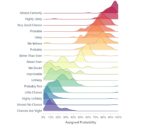
by tyler garrett | May 28, 2025 | Data Visual
In today’s data-driven world, effective dashboard design has become mission-critical for businesses keen on optimizing decision-making and driving innovation. Yet, amidst a wealth of information, dashboards often transform from intuitive tools into burdensome visual mazes overflowing with redundant details. The more cluttered the visualization, the harder it is for stakeholders to discern meaningful trends, spot opportunities, and make informed decisions. Decluttering isn’t simply about removing excess visuals—it’s about crafting functional, insightful dashboards that streamline analytics, empower decision-makers, and ultimately drive strategic value. At Dev3lop, we’ve worked with countless clients to transform tangled visualizations into clear, concise visual masterpieces. Leveraging years of expertise, we’ll reveal our proven decluttering strategies that not only simplify complex visual representations but also amplify business intelligence. Whether you’re wrestling with cumbersome Tableau dashboards, navigating burdensome manual reporting loops, or exploring ways to enhance your data visualization strategy, this guide will equip you to declutter effectively and boost your analytics maturity.
Understanding Dashboard Decluttering and Why It Matters
Dashboard clutter is not merely a superficial inconvenience—it undermines the core value offered by data analytics. Clutter leads to confusion, decision fatigue, and ultimately reduces the speed and accuracy of strategic decisions. Clear dashboards quickly direct user attention towards critical insights, enabling swift and confident action. Decluttering dashboards isn’t about losing complexity but rather achieving clarity by carefully curating which data is most impactful to display at any given moment. Businesses today are collecting volumes of data from diverse sources—from traditional platforms to modern tools like social media streams. Properly leveraging this data for insights, as outlined in our exploration of leveraging social media data’s pros and cons, requires focused visualization that highlights relevant metrics clearly without overwhelming users.
Data visualization can only deliver impact when presented strategically and intuitively, which is exactly why we’ve built our specialized services around it. At Dev3lop, our data visualization consulting services are designed specifically to help businesses declutter complex dashboards to amplify strategic decision-making. We understand first-hand the bottleneck effect of cluttered displays and recognize how dashboard redesign and appropriately applied decluttering grassroots can help elevate even the most sophisticated solutions into high-performing analytic powerhouses.
Essential Techniques to Declutter Your Dashboards Effectively
Simplify Visualizations and Stick to the Essentials
One common pitfall involves designers attempting to capture an excessive number of data metrics within a single visualization. While more data may seem beneficial, too many variables and charts often create cognitive overload, leaving your end users unclear of what to prioritize when interpreting the data. To avoid this pitfall, we encourage a precise approach: Determine your core objectives, and present only those metrics that align with key business outcomes or strategic goals. Consider leveraging self-service BI tools, such as Tableau Server, to facilitate focused views relevant to user roles and responsibilities. Our piece on Tableau Server insights explores how sophisticated, role-based views help reduce clutter by limiting displayed data to what’s meaningful to each user.
Additionally, mindful selection of visualization types dramatically reduces clutter. Remove chart junk—the unnecessary graphic elements that provide no informative purpose but rather distract viewers from data clarity. Keep visual elements minimalist: grids, shadows, excessive colors, and elaborate fonts can be stripped away to emphasize the underlying data instead. By adhering to minimalist visualization design, you help stakeholders quickly identify the vital information required for strategic planning, eliminating time wasted on unnecessary visual complexity.
Smart Use of Space and Layout Design
Beyond visual simplification, strategic space management remains vital in dashboard decluttering. Optimal layouts leverage white space effectively, allowing charts and data elements room to breathe and offering distinct clarity. Adequate spacing between visualization components improves legibility and understanding. For instance, dashboards frequently benefit from adopting grid-based systems that standardize spacing and alignment, providing consistency across different visual elements.
To illustrate, we regularly use best-practice alignment strategies and intuitive spatial organization when offering our data visualization consulting services, aiding partners in perceiving relationships clearly, eliminating unnecessary clutter, and making critical strategic information easy to ascertain at a glance. Effective dashboards utilize hierarchy effectively, guiding the user’s eye-drawn naturally toward priority data. Consider positioning critical KPIs toward the top-left region—a location that research suggests naturally captures user attention first. Layout decisions grounded in cognitive science insight facilitate faster, more actionable insights while eliminating dashboard confusion.
Filter & Drill-down Approach to Managing Information Overload
One of the most powerful and practical decluttering techniques is utilizing efficient filtering mechanisms and drill-down capabilities. Rather than overwhelming users upfront with exhaustive information, concise high-level visuals can initially reveal broad trends and metrics. Stakeholders are then allowed to filter and drill down into specifics as needed, achieving granular insights only when necessary. Properly engineered dashboards enable users to interactively fatigue-test specifics without incurring informational overload.
Incorporating intelligent filtering links closely with advanced data management infrastructures, such as data warehouses. Specialized setups, like those discussed in our deep dive article about data warehouses ending manual reporting loops, empower robust back-end query capabilities that feed interactive front-end visualizations with meaningful detail on-demand—in real time. Implementing these filter-and-drill methods through elegant dashboard integration thus enhances user comprehension, ensures actionable intelligence, and makes impactful data insights accessible while decluttering visual displays.
Advanced Techniques for Pro-Level Dashboard Clarity
Automating Data Pipelines for Real-Time, Accurate Insights
A sophisticated strategy for dashboard decluttering involves improving data accuracy and streamlining data updating procedures automatically, minimizing visual disruptions resulting from incomplete or erroneous data loads. At Dev3lop, our exploration into self-healing data pipelines highlights how automation within your data infrastructures not only enhances dashboard integrity but also minimizes dashboard clutter by removing inaccuracies and erroneous visuals proactively.
Automating your data pipeline saves stakeholders from interpreting flawed visuals, freeing expert resources from continually troubleshooting dashboards. With accurate real-time data feeds, dashboards maintain freshness without unnecessary noise, allowing your team to rely confidently on the visual representations for decision-making. By automating data integration tasks, your organization frees more bandwidth for strategic analysis, innovative interpretation, and effective data-driven performance enhancements.
Leveraging URL Splitting For Enhanced Clarity
Modern analytics dashboards often involve incorporating online marketing metrics such as campaign referral data, content performance, and page tracking. Dashboard clutter frequently arises when URLs are too long and contain cumbersome query parameters. We’ve published an extensive guide on simply and cleanly managing URLs: take a look at split URLs into clear columns for improved data readability. Splitting URLs strategically and integrating them within dashboards concisely delivers valuable marketing performance insights without cluttering visuals.
Such techniques help your analytics dashboard remain intuitive and streamlined, clearly communicating critical campaign evaluation metrics and enabling decision-makers to confidently leverage their marketing data insights without needing constant manual interpretation and editing to reduce confusion or visual overload.
Future-Proofing Dashboards Against Clutter
Ongoing evolution in technology ensures dashboard design remains not just static, but agile and adaptive. As we outline in our thought-provoking article future of data predictions for the next 5 years, intelligent and dynamic dashboards will increasingly dominate the data visualization space. Regularly evaluating and updating dashboards ensures sustained usability and productivity. Moreover, as software subscription costs escalate, effective dashboard decluttering mitigates confusion and unnecessary duplication, making your tech investments more efficient long-term—a point extensively covered in our article on rising costs of SaaS.
In sum, committing to dashboard decluttering isn’t simply about visual aesthetics—it’s a strategic imperative to ensure your analytics insights remain clear, impactful, and usable both today and into the future.
Thank you for your support, follow DEV3LOPCOM, LLC on LinkedIn and YouTube.

by tyler garrett | May 28, 2025 | Data Visual
Every business leader knows that within every data set lie powerful insights waiting to be uncovered. Yet, when working at scale, crucial details often become obscured as we summarize or aggregate data to provide quick views. Enter unit visualization—a powerful storytelling technique that reveals patterns, outliers, and trends hidden below the surface, by highlighting each individual data point. Businesses no longer need to sacrifice detail for clarity. By harnessing unit visualization thoughtfully, decision-makers gain a direct view into nuanced patterns, enabling better strategic choices, improved efficiencies, and a clearer picture of customer behaviors and market dynamics.
Understanding Unit Visualization: A Simple Definition
Unit visualization represents each data element explicitly rather than aggregating or summarizing data into bars, lines, pie charts, or other commonly used infographics. This type of visualization preserves the granular detail of your dataset, allowing each single data point to be shown, identified, and recognized directly. At its core, this approach provides stakeholders with immediate clarity and powerful context, allowing more precise decisions across your organization’s data framework.
Whether they’re dots plotted on scatter plots or tiny individual icons arranged in grids, unit visualization techniques—such as data density plots, dot matrices, and pictograms—democratize insight digestion. Each unit represents a tangible entity, quantifiable event, or precise reference. The immediate visibility of detail in these visualizations ensures resolution and clarity that aggregation methods inherently lack.
For instance, a retail organization visualizing purchase behavior would benefit by seeing individual transactions as specific units. Rather than view total sales aggregated weekly, seeing each individual purchase provides clear perspective into customer behaviors, times of heightened activity, or anomalies that broader summaries might obscure. Unit visualization is especially transformative when implemented strategically, complementing your organization’s sophisticated data engineering capabilities.
The Business Value of Showing Every Data Point
There is undeniable strategic value in preserving granularity through unit visualization. Traditional aggregated visualizations, although useful and widely accepted, often obscure the nuanced behaviors and outliers that significantly impact decision-making. By showing every data point distinctly, business leaders and data analysts become empowered with deeper insights, gaining the ability to quickly identify patterns, behaviors, and anomalies, making informed decisions rapidly.
For example, consider customer experience teams who regularly monitor user feedback on their digital platforms. Using aggregated averages alone might suggest overall satisfaction. But visualizing thousands of individual user responses separately helps uncover subtle yet important patterns, such as clusters of dissatisfaction coming from specific markets, demographics, or during certain service periods. Empowering teams with detailed visualized data points translates directly into actionable customer-focused strategies.
Likewise, risk management teams rely heavily on identifying outliers and suspicious activities quickly and comprehensively. With unit visualization, these teams gain intuitive visual insights into transaction-level data and anomalies hiding in plain sight otherwise masked by aggregation. Utilizing robust and clear visualization enhances precision, reduces blind spots, and strengthens your communication with both internal stakeholders and regulatory bodies.
Common Techniques and Tools in Effective Unit Visualization
Dot Plots and scatter plots
Dot plots and scatter plots are traditional yet highly effective methods for visualizing individual data points at scale. Each element is shown explicitly as a single mark, typically positioned along an axis or grid. Scatter plots, for example, showcase relationships between variables clearly and highlight subtle patterns which aggregated visualizations could overshadow.
Pictograms and Icon Arrays
Pictograms celebrate visual simplicity. They leverage icons to communicate quantified visual stories engagingly and transparently. A single icon may represent one specific unit of measurement, such as a customer, product, or event. Pictograms are particularly useful in presenting complex data intuitively to non-technical audiences, enhancing understanding and decision-making.
Density Plots and Dot Density Maps
Dot density maps reveal spatial distributions by plotting data points as geographic markers, uncovering insights around regional trends and concentrations. Density plots similarly convey statistical distributions, clearly highlighting concentrations and outliers. These approaches are powerful visual companions, seamlessly integrating with your overall data strategy to bring immediate clarity for decision-makers.
Integrating these visualization methods into your existing analytics and data architecture frameworks is essential. Collaborating with experienced experts who understand modern visual analytics and data governance best practices ensures effective execution, enhancing your organization’s ability to act swiftly on visual insights.
Best Practices and Techniques for Clear Visualization
While displaying every data point is powerful, it also poses a risk of visual overload or clutter. Optimizing visualization design remains critical, embracing visual minimalism to maintain clarity, readability, and impact no matter the scale. Specifically, practitioners should thoughtfully color code, leverage strategic placement and sorting of points, avoid unnecessary visual specificities, and ensure context is intuitive.
Avoiding clutter is crucial—as explained clearly in our guidance on avoiding unnecessary chart elements and decorations, each visual element must serve a clear purpose. Similarly, ensure consistent and meaningful context through legends, annotations, or subtle interactivity that allow detailed examination of intriguing areas, which ultimately encourages user exploration, discovery, and understanding.
Additionally, ensure visualization workflows integrate seamlessly with data architecture. Proper data architecture patterns for microservices or structured pipelines like robust data enrichment pipeline architectures further strengthen underlying frameworks, enabling scalable unit visualizations without complexity or latency.
Unit Visualization Challenges and How to Overcome Them
A primary challenge facing visualization teams is effectively managing large data volumes. Displaying every unique data point demands efficient processing and rendering capabilities. Optimization technologies, deploying smart algorithms, and establishing SQL-driven techniques like effectively mastering range filtering with SQL BETWEEN operators, significantly improve speed and enhance user performance when querying and visualizing large-scale datasets.
An inherent complexity in unit visualization arises when dealing with multiple data categories and dimensions simultaneously. To manage this complexity effectively, adhere to established design principles, ensure clean semantic structuring, and leverage visualization software combined with precisely structured data queried effectively from your databases. Partnering with experienced organizations offering targeted consulting, like short yet impactful engagements through quick API consulting engagements, helps organizations quickly resolve performance bottlenecks, design inefficiencies, and deployment complexities smoothly.
Also, challenges around ensuring consistent visualization experiences across various operating systems, browsers, and devices can emerge. Addressing these challenges through technology standards, strategic use of cross-platform compatible development environments—further detailed in our technical discussion about Mac vs Windows compatibility with JavaScript using VS Code—remains critical to avoid inconsistent user experiences.
Elevate Your Decision-Making Strategy with Unit Visualization
When executed strategically, unit visualizations can radically improve organizational clarity, agility, and efficiency in data-driven decision making. Leveraging unit visualization directly aligns every vantage point from technical specialists, frontline operational managers, to executive management, ensuring everyone has access to clear, insightful, data-backed perspectives driving informed decisions every day.
As your organization navigates an increasingly complex data landscape, consider partnering with experienced experts equipped with proven capabilities in data strategy, analytics innovation, visualization techniques, and sophisticated database management frameworks. Such collaboration ensures your visualization strategy is scalable and future-proof, allowing you clearly defined descriptive, diagnostic, predictive, and prescriptive insights—empowering your organization at every possible decision-making juncture.
Thank you for your support, follow DEV3LOPCOM, LLC on LinkedIn and YouTube.

by tyler garrett | May 28, 2025 | Data Management
Data is the lifeblood of modern businesses, fueling insights, innovation, and strategic growth—that much is evident. But as data increases exponentially, so do the complexities surrounding its accessibility, security, and governance. Today, decision-makers aren’t merely tasked with securing their data—they must ensure that the right data reaches the right person at precisely the right moment. This entails moving beyond traditional role-based models toward more dynamic, precise, and intelligent permissioning systems. Enter Attribute-Based Access Control (ABAC). Designed for modern ecosystems where complex, distributed data environments are commonplace, ABAC provides agile, fine-grained permissions that dynamically adapt to changing requirements and context. In this post, we’ll explore how ABAC empowers organizations to leverage their analytics capabilities securely and effectively, enabling confident decision-making and optimal business performance.
Understanding Attribute-Based Access Control (ABAC)
Attribute-Based Access Control (ABAC) enables organizations to manage data permissions through policies based on dynamically evaluated attributes. Unlike traditional role-based access control (RBAC), which assigns permissions based simply on user roles, ABAC extends granularity and flexibility by evaluating multiple dimensions—such as user attributes, data type characteristics, resource attributes, and even environmental aspects like location or time of day. This complex interplay of attributes allows for precise access control that dynamically responds to changes without manual administrative interventions.
For example, decision-makers who wish to restrict access to sensitive financial insights to specific managerial-level analysts within certain geographic locations during office hours can automate these protocols effortlessly. Such contexts can be challenging for static RBAC systems to manage effectively. ABAC’s capability to flow policy assessments dynamically based on multiple attribute combinations solves these complexities, improving overall data security and governance.
Companies utilizing cutting-edge analytics platforms, such as those offered by our Power BI consulting services, can integrate ABAC to establish powerful data permission frameworks. Whether visualizing customer behavioral insights or integrating streaming data for real-time operational analytics, ABAC ensures insights reach the correct user group at the optimal moment securely and transparently.
Advantages of Adopting ABAC for Data-Driven Enterprises
There are significant benefits for organizations enhancing their data permissions framework using Attribute-Based Access Control. From scalability and precision to flexible governance and regulatory compliance, ABAC unlocks dynamic possibilities equipping enterprises to thrive in data-intensive environments.
Enhanced Data Security and Compliance
Attribute-based rules adapt and evolve as data environments change, significantly reducing security risks and helping ensure adherence to data protection regulations like GDPR or CCPA. Agencies utilizing ABAC mechanisms can demonstrate clearer audit trails and a comprehensive understanding of which attributes are triggering specific permissions and controls. This transparency is invaluable in preparing for audits and compliance assessments.
Superior Scalability and Efficiency
Traditional RBAC architectures can quickly become impractical as organizations scale and evolve rapidly. ABAC significantly streamlines permission management by automating access approval decisions, ensuring scalability while drastically reducing administrative overhead. For instance, businesses looking to implement continuous integration and data processing can benefit from adopting ABAC alongside solutions like schema evolution handling in data pipeline development to maintain long-term agility and efficiency.
Finer Granularity and Flexibility
Fine-grained ABAC policies allow precise data-level permissions, meaning access can be controlled down to the individual row or cell. Such detailed permissions make it ideal for businesses managing compositional data sets, including advanced applications such as ternary plots for three variable compositional data. The ability to grant access selectively based on attributes leads to precise, secure, and strategic management of sensitive or highly specialized information.
Implementing ABAC in Data Analytics Workflows
Transitioning to an ABAC framework involves careful strategic planning, evaluation, and implementation. Decision-makers and data leaders looking to integrate ABAC into existing analytics environments can achieve rapid success through focused planning and robust attribute governance.
Define Clear Policies and Attributes
Clear definition of attributes is crucial—attributes describing data, users, resources, and context must be well-defined and clearly documented to create coherent and consistently enforceable ABAC policies. Consider organizational data requirements and the granularity of necessary permissions carefully—whether developing custom language-aware data processing applications or creating automated data visualization scenarios.
Integrate ABAC into Data Pipelines
Integrating ABAC seamlessly into data pipelines ensures adaptive control and permission management during data ingestion, transformation, processing, and distribution. This integration is particularly relevant when implementing detailed, automated strategies, such as when organizations send XML data to Google BigQuery using node.js or when managing failed processing tasks through robust solutions like dead letter queues for failed data processing.
Adopt Continuous Policy Evaluation
Continuous and automated policy evaluation ensures permission frameworks consistently remain accurate, efficient, and secure over time. Leveraging techniques such as upsert implementation patterns in various data stores fosters an agile analytics ecosystem that can adjust permissions in real time as data contexts evolve—allowing ABAC to deliver increased value and reducing risk exposures.
Real-World Use Cases of ABAC in Action
Leading enterprises across industries deploy ABAC to enhance their analytics environments, illustrating its practical value clearly and convincingly.
In finance, organizations leverage ABAC to implement sophisticated access policies, ensuring only authorized personnel can analyze customer-sensitive financial databases. Healthcare providers utilize ABAC to grant clinicians granular visibility into patient records based solely on clinical roles combined with institutional trust-level attributes. Additionally, ABAC enhances decision-making workflows within interactive analytics tools. Innovative visualizations, such as animated transitions in interactive data visualizations, can be personalized securely, aligning with end-user attributes and access credentials.
Furthermore, technology companies often implement ABAC for granular permissions in real-time analytics dashboards. Solutions such as Tableau server automated dashboard images rely upon ABAC to ensure dashboards securely reach intended audiences with specific visual insights authorized by contextual and organizational attributes.
The Future of Fine-Grained Data Permissions with ABAC
In an ever-evolving digital landscape, the requirement for dynamic, secure, and fine-grained data permissions will only intensify. ABAC offers the agility, security, and precision decision-makers demand, becoming the core strategic asset anchoring data governance frameworks. As enterprises increasingly implement modern data analytics technologies—including visualization software, machine learning algorithms, and big data platforms—ABAC presents unparalleled opportunities for secure innovation and data-driven productivity.
Going forward, attribute-based permission frameworks within analytics ecosystems will integrate even more sophisticated machine learning algorithms and artificial intelligence to continuously optimize attribute assessments and enhance security decisions. Thus, organizations embracing ABAC now will reap significant competitive advantages—driving powerful, secure, and intelligent analytics capabilities well into the future.
At Dev3lop, we specialize in assisting decision-makers and analytics leaders to embrace advanced data governance methodologies like ABAC. Reach out today to explore how your organization can secure its data-driven future.
Thank you for your support, follow DEV3LOPCOM, LLC on LinkedIn and YouTube.

by tyler garrett | May 27, 2025 | Data Management
In the data-driven era of rapid digital transformation, protecting sensitive information is as pivotal as harnessing its analytical potential. Whether you’re an executive steering strategy in healthcare, a data professional exploring market insights, or an innovator designing next-gen products, safeguarding data privacy isn’t merely a compliance checkbox—it’s essential to sustaining trust and driving competitive advantage. This necessity brings statistical disclosure control (SDC) into the spotlight. SDC encompasses sophisticated methodologies that allow stakeholders to unleash valuable data insights while simultaneously preserving confidentiality, crucial in industries from healthcare and finance to commercial middleware platforms. This article explores the best practices, challenges, and leading techniques in implementing statistical disclosure control, arming decision-makers with the expertise needed to responsibly tap into data’s full potential.
Understanding Statistical Disclosure Control (SDC)
Statistical Disclosure Control (SDC) refers to the collection of methodologies employed to ensure personal or sensitive information remains confidential when statistical data is publicly released or shared among organizations. The objective behind SDC techniques lies in balancing data usability and privacy risks, enabling insights and analytics without compromising confidentiality. Businesses spanning sectors from financial services to healthcare, and even city governments addressing complex issues like housing affordability, rely heavily on such methodologies to secure sensitive information. A deeper understanding of SDC reflects heightened organizational awareness of ethics in data collection—similar to these software engineering best practices emphasizing responsible and accountable data analysis.
Given massive volumes of available data, modern businesses increasingly turn to robust platforms such as PostgreSQL. Compared to alternatives, PostgreSQL provides improved security and feasibility for implementing strict privacy measures, as highlighted in our comparison of PostgreSQL vs SQL Server. Understanding SDC not only ensures compliance with strict data regulations but also solidifies trust among stakeholders who rely on your organization’s analytical integrity and transparency.
The Necessity of Statistical Disclosure Control in Today’s Data Landscape
In our data-reliant world, maintaining customer confidentiality and security is paramount. Companies whose core businesses revolve around processing high-speed data streams or intricate analytical tasks run pronounced privacy risks. Real-time analytical processes, such as those mentioned in our article on real-time data processing with Node.js, underscore the necessity of integrated privacy-preserving frameworks. Statistical disclosure control forms a cornerstone of these frameworks, transforming raw data safely into actionable insights.
Similarly, advanced visualizations—for instance, interactive network graphs generated with D3.js—must cautiously navigate disclosure risks, as even anonymized visual patterns could inadvertently expose sensitive connections or privy information. Strategic implementation of SDC not only guards against unintended disclosures but also reinforces data governance. With technologies increasingly demanding high-performance, security-focused data interactions, organizations face growing pressure to employ proactive SDC strategies that effectively mitigate risks while retaining data utility and analytical accuracy.
Top Techniques for Implementing Statistical Disclosure Control
Data Suppression and Generalization
Data suppression involves identifying and removing elements from datasets that potentially pose disclosure risks. Typically used with identifiable or sensitive items, suppression significantly reduces the chances of identifying individuals or sensitive attributes. Generalization takes this technique a step forward by aggregating data elements into broader categories. For example, displaying age in ranges (25-34, 35-44) or using approximate geographic areas instead of detailed ones limits specificity without entirely losing analytical value.
Organizations leveraging PostgreSQL databases will benefit from our PostgreSQL consulting services for expert guidance and implementation of suppression and generalization directly within their database environment to streamline privacy management processes.
Microaggregation
Microaggregation clusters individual data records into groups based on similarities, replacing original data points with aggregated values. By averaging numerical values across small clusters, you obscure individual-level insights while preserving broader statistical accuracy. Used correctly, microaggregation anticipates privacy concerns, particularly impactful in financial and healthcare sectors where both sensitive data confidentiality and analytical precision are crucial.
Decision-makers can proactively mitigate privacy breaches by leveraging microaggregation techniques alongside strategic forecasting. Our article on inventory management via strategic forecasting highlights analytical scenarios where aggregated data maintains predictive insight without compromising confidentiality.
Noise Addition & Perturbation
Noise addition introduces controlled random elements, or “noise,” into data, slightly distorting original values, yet preserving statistical properties for broader analysis. Similarly, perturbation modifies data slightly to ensure confidentiality while minimally impacting insight quality. These methods prevent reconstruction of original sensitive details and are widely employed within large-scale streaming processes—such as financial fraud prevention—for safer insights extraction, as highlighted in our guide on data streaming’s role in fraud prevention.
Data Swapping & Synthetic Data Generation
Data swapping (also known as shuffling) rearranges sensitive data between records, significantly obstructing attempts at unauthorized reconstruction but preserving the essential statistical distribution within datasets. Synthetic data generation proactively addresses confidentiality with artificial yet statistically representative data points. These techniques are particularly useful in achieving greater reliability in consistent analytics pipelines, complementing principles from our resource on designing dependable data pipelines.
Addressing Challenges in SDC Implementation
Although beneficial, effective SDC implementation doesn’t occur without hurdles. Organizations must carefully balance privacy maintenance and the possibility of degraded analytical accuracy due to information loss. Overgeneralization or excessive suppression may compromise analytical depth, making governance increasingly challenging. Data professionals, therefore, should precisely choose SDC techniques that match their industry standards, regulatory frameworks, and specific analytical requirements.
Avoiding common missteps in data engineering is essential: understanding common pitfalls will save significant resources and prevent wasted effort. Our resource detailing common data engineering anti-patterns can be instrumental in successfully implementing robust SDC systems, ensuring that data privacy management aligns strategically with organizational analytics and innovation goals.
Future Innovations and Trends in Statistical Disclosure Control
As artificial intelligence and machine learning continue to evolve, organizations are increasingly focused on developing data privacy implementations that align with future insights demands. Techniques like differential privacy—a sophisticated probabilistic mechanism that allows actionable aggregate analytics without individual-level exposure—now emerge significantly, reshaping traditional SDC practices. Advanced processing methods, like those described in our discussion around accelerating data workloads via vectorized query processing, also help seamlessly integrate privacy methodologies with real-time analytical operations.
Adaptive privacy and pseudonymization algorithms further showcase upcoming potential, underscoring the importance of continuously refining privacy-centric analytical workflows. Innovations in automated, SC-driven disclosure risk assessment methods and privacy-aware machine learning algorithms will allow businesses across sectors to extract unprecedented value from data without sacrificing confidentiality.
Conclusion: Harnessing the Strategic Value of SDC
Incorporating robust statistical disclosure control implementations is no longer optional but critical—even strategic—to modern enterprises seeking sustained success through responsible data practices. By leveraging advanced techniques and adapting to emerging trends, business leaders and decision-makers can turn privacy compliance from a mere regulatory hurdle into a unique strategic differentiator. Carefully balancing anonymization, generalization, microaggregation, and sophisticated noise addition ensures organizations confidently extract high-quality insights while fully safeguarding their stakeholder trust and privacy commitments.
Thank you for your support, follow DEV3LOPCOM, LLC on LinkedIn and YouTube.

by tyler garrett | May 27, 2025 | Data Management
In the fast-paced world of data-driven decision making, businesses that maximize their data value gain strategic advantages over competitors. Yet, effectively distributing and managing data across numerous stakeholders swiftly becomes a daunting challenge. Enter the Data Consumer Registration and Notification System—a robust, scalable method that empowers organizations to efficiently manage data requests, streamline data delivery, and send timely notifications to internal and external data consumers. This critical innovation ensures that analytics workflows remain accurate, commination channels remain clear, and every stakeholder stays informed in real-time. By mastering the complexities of data distribution through registration and notification best practices, your organization gains agility, enhances transparency, and unlocks deeper levels of trust from customers and partners alike.
The Importance of Establishing Structured Data Registration Processes
Today’s enterprises handle extensive data streams sourced from various platforms, applications, and external vendors. Successfully managing this data deluge demands a structured registration process for data consumers. Establishing clear registration protocols allows organizations to identify precisely who requires the data, understand the specific purpose behind each request, and ascertain precisely how that data will be leveraged across the business landscape. Without effective processes, organizations run the risk of compromising data integrity, security, and compliance practices.
A thoughtfully implemented registration system introduces numerous advantages, including ensuring transparency and documentation of data usage, managing compliance requirements, and supporting audit trails. Moreover, systematic consumer registration facilitates adaptive strategies, ensuring that each consumer’s analytical needs align with business capabilities. Businesses that have utilized advanced cloud-enabled services such as Azure consulting services often report enhanced capacity to manage and streamline their data governance processes, as they leverage cloud-native solutions to support data consumer management.
Moreover, with data-intensive processes evolving from static to dynamic use-cases, organizations increasingly shift from traditional ETL methods to ELT approaches. As highlighted in our comprehensive analysis on real use cases where ELT outperformed ETL, having a structured data consumer registration helps businesses adapt to modern data consumption patterns more swiftly—capturing detailed stakeholder requirements upfront and fueling successful platform migrations and analytics transformations.
Notification Systems: Enhancing Real-Time Data Communication
Modern organizations don’t just manage data—they manage dynamic, evolving data streams. Imagine scenarios where data providers issue significant updates, maintenance windows, outages, or critical changes in data schemas and definitions. Without robust notification mechanisms, such vital information can go unnoticed by data consumers, leading to compromised reporting accuracy, ineffective analytics, or disrupted downstream dependencies.
To achieve proactive risk management, organizations need automated notification systems integrated closely with their data management infrastructures. Such notification mechanisms act as a centralized communications medium that quickly disseminates alerts, ensuring data consumers are promptly informed of every crucial update or change. For instance, a robust notification system can integrate directly into data pipelines, databases, and streaming analytics architectures. This proactive communication approach significantly enhances efficiency—minimizing costly downtimes and improving data credibility across consumer groups.
Applying advanced techniques such as those discussed in our article on microservice telemetry aggregation patterns for real-time insights allows organizations to tap into sophisticated notification capabilities. Telemetry patterns support immediate event processing and real-time alerts, helping businesses quickly pinpoint aberrations in data processing and trigger notifications swiftly and precisely.
Implementing an Effective Data Consumer Registration & Notification Model
To implement a robust registration and notification system, organizations should first formulate clear business requirements to capture consumer needs, intended data usage scenarios, and required communication frequency and methods. Formalized registration processes can include intuitive portals, standardized online forms, or streamlined API-driven systems to facilitate ease-of-access for data consumers.
Sophisticated solutions effectively leverage automation, allowing data consumers to subscribe to selected topic-specific notifications or opt-in/opt-out on-demand. Such flexibility ensures greater control and data consumer satisfaction. Adaptive parallelism in data processing can also be incorporated, dynamically meeting changing demands for data delivery. Adaptive resource management models such as adaptive parallelism ensure efficient handling of burgeoning consumer requests, notifications, and delivery loads in real-time, especially during peak demand periods.
Additionally, notification systems should incorporate multi-channel alert features—such as instant messaging, emails, SMS notifications, or dedicated dashboards—to maximize reach. Machine learning capabilities, as outlined in our overview of real-world applications of Artificial Intelligence in business, can intelligently predict potential issues and send proactive alerts before actual disruptions occur, significantly enhancing stakeholder confidence and reducing operational risks.
Optimizing Data Processing and Distribution Efficiency
Behind every successful Data Consumer Registration and Notification System, efficient data processing and distribution capabilities play pivotal roles. To optimize the system and maximize its capabilities, organizations should focus on efficient data distribution methodologies. This is particularly important in a distributed processing environment, where optimizing shuffle tasks and inter-node data transfer can significantly improve system responsiveness. Our analysis on optimizing shuffle operations in distributed data processing provides key insights for stakeholders looking to drive responsive data delivery.
Furthermore, organizations should also conduct deep dives into their data infrastructure to evaluate data movement patterns carefully. Strategic database querying techniques, such as those detailed in our comprehensive guide to mastering the SQL WHERE clause, can significantly enhance performance by minimizing unnecessary data transfers or filtering data earlier in the pipeline.
Additionally, when large datasets frequently change or overlap, employing best practices like those explored in our article about jitter implementation for overlapping data point visualization creates a clear, intuitive visualization for end-consumers, significantly minimizing points of confusion or misinterpretation.
Ensuring Effective Visual Communication and Fraud Detection in Data Notifications
Presenting data insights effectively to end-users remains a crucial element in a Data Consumer Registration and Notification System. Equipping stakeholders with clear and intuitive visual analytics dashboards can significantly improve response times and decisions. Effective visualization strategies, drawing upon insights provided in our research of visual encoding effectiveness, will ensure that alerts and notifications attract immediate attention and enable faster interpretation of critical data updates.
Additionally, as organizations move from traditional spreadsheets toward streaming analytics for real-time business insights, fraud detection has evolved significantly. Effective notification systems can identify anomalies, triggering real-time alerts for potential fraud, compliance issues, or data processing errors. Incorporating sophisticated anomaly detection models into notification systems ensures data integrity remains alarmingly secure and reliable.
Ultimately, it’s important to continuously revisit, reassess, and fine-tune both the registration and notification processes, as data capabilities and consumer needs evolve over time. Staying agile with data strategy solidifies the system’s long-term success and supports a robust, data-driven organizational culture.
Conclusion: A Strategic Approach to Data Consumer Management and Notifications
In today’s business environment, implementing an effective Data Consumer Registration and Notification System is no longer optional—it’s strategically critical. Organizations that formalize these systems foster greater transparency, ensure timely and accurate information distribution, and significantly mitigate communication and data governance risks.
Leading enterprises that leverage strategic partnerships, such as Azure consulting services, empower their decision-makers, enabling comprehensive cloud solutions for dynamic data management. Leveraging proven best practices—including advanced analytics techniques, real-time telemetry aggregation, effective visualization, and smart anomaly detection—streamlines the organization’s entire data strategy, delivering unmatched efficiency and reliability, both today and in the future.
Seize a competitive advantage: invest in robust data consumer registration and notification systems built for reliability, clarity, and accuracy. Your data, your consumers, and your organization’s overall success depend on it.
Thank you for your support, follow DEV3LOPCOM, LLC on LinkedIn and YouTube.























